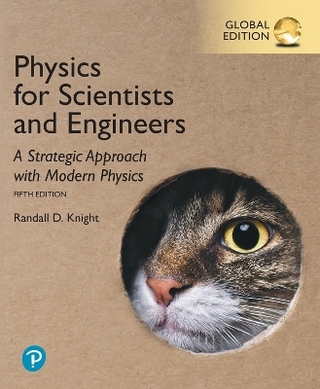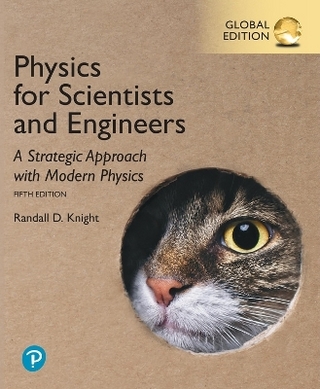
Handbook of Machine Vision
Wiley-VCH Verlag GmbH (Hersteller)
978-3-527-61013-6 (ISBN)
- Keine Verlagsinformationen verfügbar
- Artikel merken
With the demands of quality management and process control in an industrial environment, machine vision is becoming an important issue. This handbook of machine vision is written by experts from leading companies in this field. It goes through all aspects of image acquisition and image processing. From the viewpoint of the industrial application, the authors also elucidate in topics like illumination or camera calibration. Attention is paid to all hardware aspects, starting from lenses and camera systems to camera-computer interfaces. Besides the detailed hardware descriptions the necessary software is discussed with equal profoundness. This includes sections on digital image basics as well as image analysis and image processing. Finally, the user is introduced to general aspects of industrial applications of machine vision, such as case studies and strategies for the conception of complete machine vision systems. With this handbook, the reader will be enabled not only to understand up to date systems for machine vision but will also be qualified for the planning and evaluation of such technology.
Alexander Hornberg is Professor for Physics and Photonics at the University of Applied Sciences Esslingen, Germany. He holds a degree in physics and a doctorate in mathematics from the University of Karlsruhe. He started his professional career as development and software engineer for a major industry manufacturer (DUNLOP) in 1989. In 1992 he returned to higher education at the University of Applied Sciences Ulm. Since 1997 he has been working in the field of machine vision at the Technical University of Applied Sciences Esslingen.
1 Processing of Information in the Human Visual System (Prof. Dr. F. Schaeffel, University of Tubingen). 1.1 Preface. 1.2 Design and Structure of the Eye. 1.3 Optical Aberrations and Consequences for Visual Performance. 1.4 Chromatic Aberration. 1.5 Neural Adaptation to Monochromatic Aberrations. 1.6 Optimizing Retinal Processing with Limited Cell Numbers, Space and Energy. 1.7 Adaptation to Different Light Levels. 1.8 Rod and Cone Responses. 1.9 Spiking and Coding. 1.10 Temporal and Spatial Performance. 1.11 ON/OFF Structure, Division of theWhole Illuminance Amplitude in Two Segments. 1.12 Consequences of the Rod and Cone Diversity on Retinal Wiring. 1.13 Motion Sensitivity in the Retina. 1.14 Visual Information Processing in Higher Centers. 1.15 Effects of Attention. 1.16 Color Vision, Color Constancy, and Color Contrast. 1.17 Depth Perception. 1.18 Adaptation in the Visual System to Color, Spatial, and Temporal Contrast. 1.19 Conclusions. References. 2 Introduction to Building a Machine Vision Inspection (Axel Telljohann, Consulting Team Machine Vision (CTMV)). 2.1 Preface. 2.2 Specifying a Machine Vision System. 2.3 Designing a Machine Vision System. 2.4 Costs. 2.5 Words on Project Realization. 2.6 Examples. 3 Lighting in Machine Vision (I. Jahr, Vision & Control GmbH). 3.1 Introduction. 3.2 Demands on Machine Vision lighting. 3.3 Light used in Machine Vision. 3.4 Interaction of Test Object and Light. 3.5 Basic Rules and Laws of Light Distribution. 3.6 Light Filters. 3.7 Lighting Techniques and Their Use. 3.8 Lighting Control. 3.9 Lighting Perspectives for the Future. References. 4 Optical Systems in Machine Vision (Dr. Karl Lenhardt, Jos. Schneider OptischeWerke GmbH). 4.1 A Look on the Foundations of Geometrical Optics. 4.2 Gaussian Optics. 4.3 The Wave Nature of Light. 4.4 Information Theoretical Treatment of Image Transfer and Storage. 4.5 Criteria for Image Quality. 4.6 Practical Aspects. References. 5 Camera Calibration (R. Godding, AICON 3D Systems GmbH). 5.1 Introduction. 5.2 Terminology. 5.3 Physical Effects. 5.4 Mathematical Calibration Model. 5.5 Calibration and Orientation Techniques. 5.6 Verification of Calibration Results. 5.7 Applications. References. 6 Camera Systems in Machine Vision (Horst Mattfeldt, Allied Vision Technologies GmbH). 6.1 Camera Technology. 6.2 Sensor Technologies. 6.3 CCD Image Artifacts. 6.4 CMOS Image Sensor. 6.5 Block Diagrams and their Description. 6.6 Digital Cameras. 6.7 Controlling Image Capture. 6.8 Configuration of the Camera. 6.9 Camera Noise1. 6.10 Digital Interfaces. References. 7 Camera Computer Interfaces (Tony Iglesias, Anita Salmon, Johann Scholtz, Robert Hedegore, Julianna Borgendale, Brent Runnels, Nathan McKimpson, National Instruments). 7.1 Overview. 7.2 Analog Camera Buses. 7.3 Parallel Digital Camera Buses. 7.4 Standard PC Buses. 7.5 Choosing a Camera Bus. 7.6 Computer Buses. 7.7 Choosing a Computer Bus. 7.8 Driver Software. 7.9 Features of a Machine Vision System. 8 Machine Vision Algorithms (Dr. Carsten Steger, MVTec Software GmbH). 8.1 Fundamental Data Structures. 8.2 Image Enhancement. 8.3 Geometric Transformations. 8.4 Image Segmentation. 8.5 Feature Extraction. 8.6 Morphology. 8.7 Edge Extraction. 8.8 Segmentation and Fitting of Geometric Primitives. 8.9 Template Matching. 8.10 Stereo Reconstruction. 8.11 Optical Character Recognition. References. 9 Machine Vision in Manufacturing (Dr. Ing. Peter Waszkewitz, Robert Bosch GmbH). 9.1 Introduction. 9.2 Application Categories. 9.3 System Categories. 9.4 Integration and Interfaces. 9.5 Mechanical Interfaces. 9.6 Electrical Interfaces. 9.7 Information Interfaces. 9.8 Temporal Interfaces. 9.9 Human Machine Interfaces. 9.10 Industrial Case Studies. 9.11 Constraints and Conditions. References. Index.
| Verlagsort | Weinheim |
|---|---|
| Sprache | englisch |
| Maße | 186 x 245 mm |
| Gewicht | 1708 g |
| Themenwelt | Naturwissenschaften ► Physik / Astronomie |
| Technik ► Elektrotechnik / Energietechnik | |
| ISBN-10 | 3-527-61013-8 / 3527610138 |
| ISBN-13 | 978-3-527-61013-6 / 9783527610136 |
| Zustand | Neuware |
| Haben Sie eine Frage zum Produkt? |
aus dem Bereich


